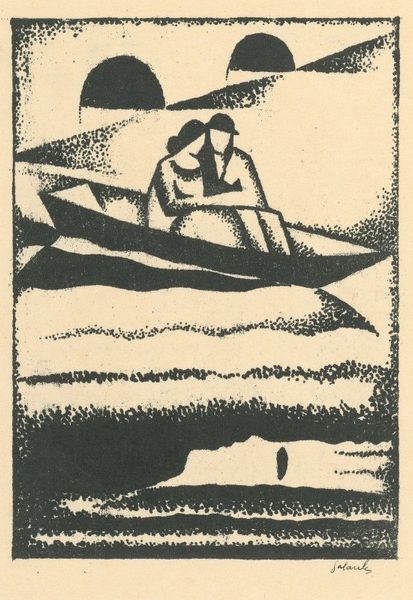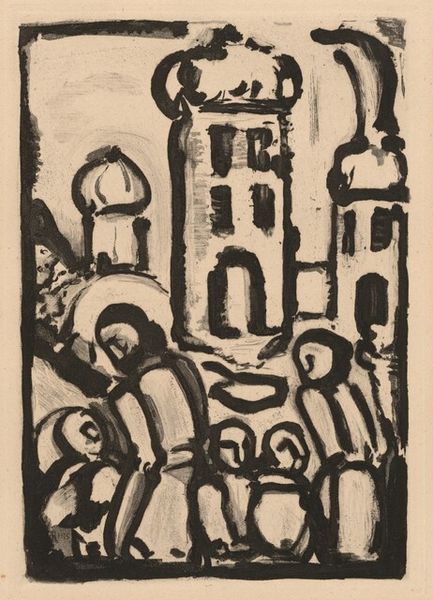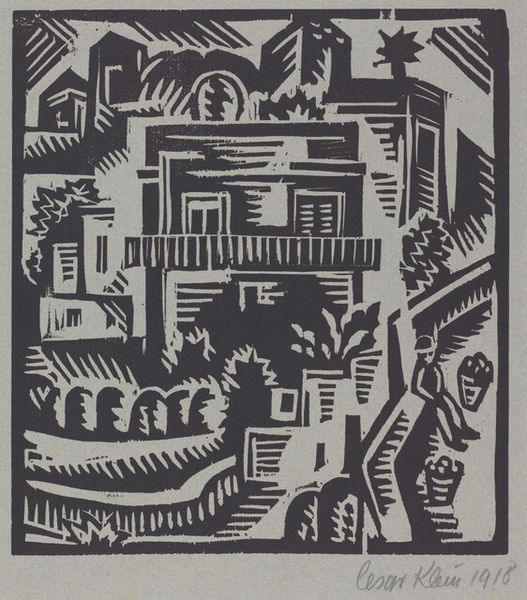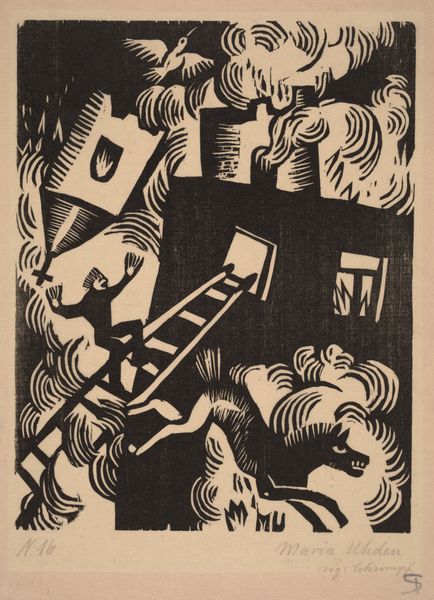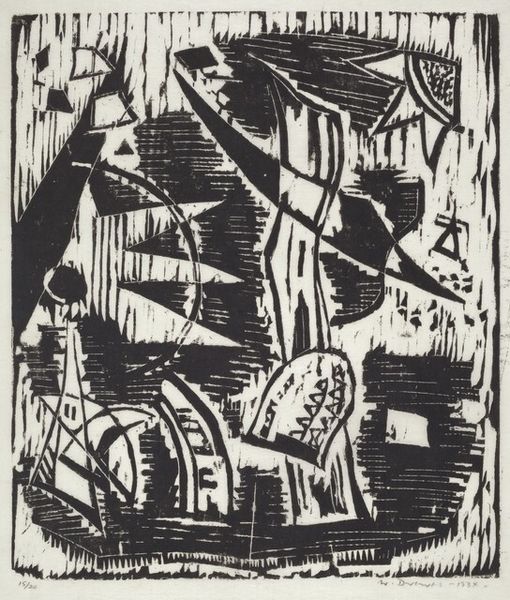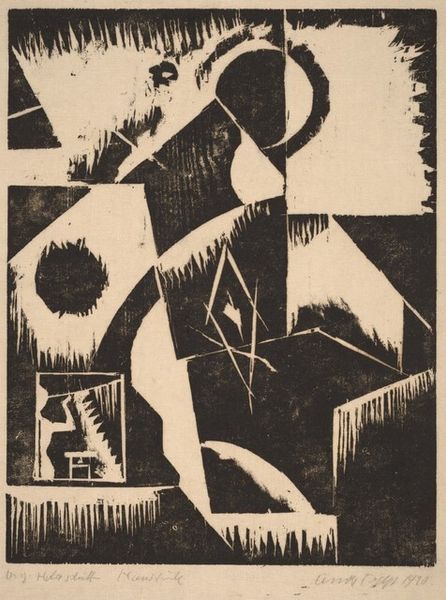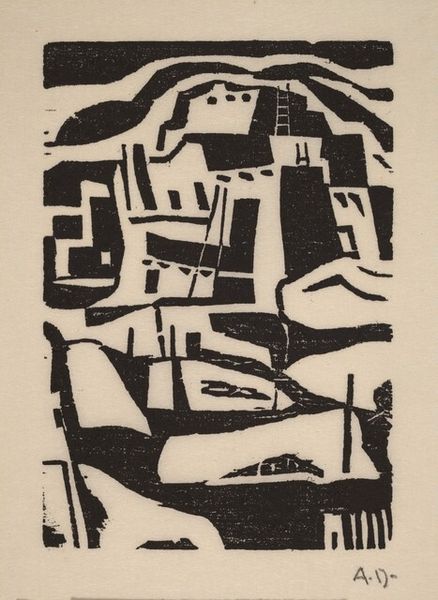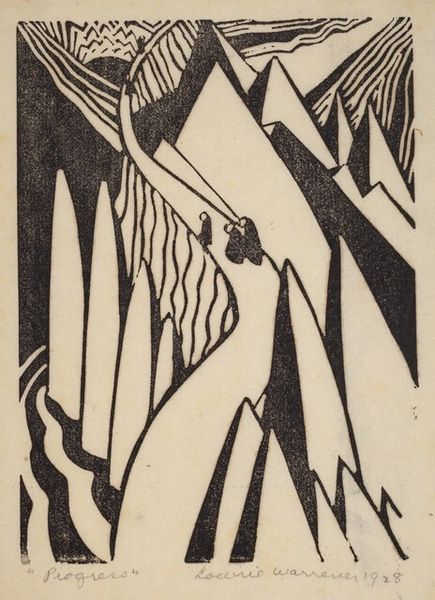
print, woodcut
# print
#
abstract
#
geometric
#
expressionism
#
woodcut
Copyright: Public Domain: Artvee
Curator: Wassily Kandinsky's "Klänge Pl.22", created in 1913, presents itself as a potent woodcut print, showcasing his burgeoning exploration into abstraction. What strikes you upon viewing this work? Editor: Immediately, the stark contrast of black and white evokes a somber mood, almost like a scene shrouded in darkness. The composition feels crowded, yet there is a clear focus on what appears to be some kind of monumental structure looming over the people gathered. Curator: The "Klänge" series was significant in Kandinsky's journey. They functioned as almost a collaborative experiment between visual art and poetry, intertwining imagery and expressionistic text. Note the way the woodcut medium itself lends a certain raw, unfiltered quality to the imagery. Editor: It does—the harsh lines seem to amplify the sense of unease. Given that this piece emerged right before the outbreak of World War I, I can't help but see a metaphor for the looming chaos and impending doom facing European society at that time. The huddled figures, are they seeking guidance? Or are they trapped? Curator: It's a compelling interpretation. We often read Kandinsky through the lens of pure abstraction, seeking spiritual resonance through color and form alone. But contextualizing it within the pre-war anxieties of its time opens up a space to consider these works through socio-political circumstances and individual responses to widespread upheaval. Editor: Absolutely. Art doesn't exist in a vacuum, and the burgeoning anxieties felt during those volatile times seeped into artistic expressions, even those ostensibly focused on abstraction. The use of abstraction may have even acted as a method to distance oneself from political pressures while channeling emotions of impending catastrophe. Curator: And in "Klänge Pl.22," we see precisely this kind of nuanced interplay. It underscores Kandinsky's engagement with both internal emotional landscapes and the broader societal shifts during a pivotal period in European history. Editor: Ultimately, exploring works like this reminds us to consider not just the what of a work of art but, crucially, the when and the why, enabling richer and more profound understandings of our collective human experience.
Comments
No comments
Be the first to comment and join the conversation on the ultimate creative platform.
